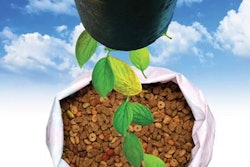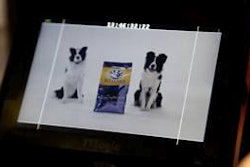The American Veterinary Medical Association (AVMA) caused quite a stir last year when it issued a policy discouraging raw petfood diets. Petfood companies in that segment naturally protested, as did plenty of consumers.
While some critics of the policy alleged AVMA had a bias toward or covert financial arrangement with manufacturers of more traditional petfood products, more reasoned criticisms questioned the science behind the policy: Was there any? Was the policy based on any objective analysis or study?
Though several recalls of raw petfoods have occurred this year, those types of products are no more likely to be recalled than others. More petfoods of all types are being recalled because under the Food Safety Modernization Act, the US Food and Drug Administration (FDA) has zero tolerance for Salmonella. And unfortunately, that is one pathogen that has so many serotypes and is so prevalent in the environment, it shows up nearly everywhere, including petfood facilities. Prudent manufacturers are issuing recalls if the most minute amount of Salmonella is found, even if no products, pets or people have been affected.
Still, the perception -- and likelihood -- persists that with raw petfoods, the potential for contamination by pathogens like Salmonella is higher because traditional processing steps like extrusion or retort that would kill any contaminants are not used. So, some raw petfood companies have taken their safety systems to a higher level.
Recently, Stella & Chewy's, a manufacturer of frozen and freeze-dried petfoods, announced it has earned a patent for its food safety system. The system consists of a technology called high pressure processing, which uses large amounts of water pressure to kill pathogens and is scientifically validated, according to James Marsden, PhD, regents professor of food safety at Kansas State University and consultant to Stella & Chewy's. That technology is combined with an environmental pathogen-reducing treatment system, which continually sanitizes food-contact surfaces with cleansing plasma.
Marsden accurately calls this a breakthrough for the raw petfood market. Yet again, raw petfood manufacturers are not the only ones that have found Salmonella in their facilities and felt compelled to recall products. That happens with dry petfoods, too, and though the high heat generated by the extrusion process kills that pathogen and many others, it had never been scientifically validated as a kill step nor recognized as one by regulatory bodies such as FDA.
At least, not until about a month ago, when Extru-Tech Inc. announced it had completed a scientific validation study proving the kill step of the extrusion process in its Level 2 Bio-Safety Extrusion lab in Manhattan, Kansas, USA. The validation is an industry first, the company says. (Note that Marsden consulted on this effort, too.)
What is probably most noteworthy about Extru-Tech's lab and study are that they replicate real-world petfood processing conditions, including a full-scale extruder, a Salmonella serotype commonly found in dry manufacturing environments and a dry dog food formulation that is representative of many used in the industry.
Marsden notes that in a dry petfood manufacturing environment, product can often be recontaminated after the extrusion step if Salmonella or other pathogens are present in the plant; Extru-Tech's next steps are to look at that potential for recontamination downstream. (You can learn more about what the company has done and learned to date by attending Petfood Forum, where Will Henry, Extru-Tech's director of technology R&D, will speak about the study.)
But, there's no denying that innovative companies like Extru-Tech and Stella & Chewy's are helping our industry prove it takes petfood safety seriously.
















